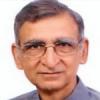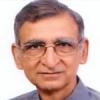With Indian independence and coming of Indian Constitution; the foundations for progress in the society were laid. This was to be for an all out progress and the basis of this was the principles of scientific temper. This process was guided by the architect of modern India, Jawaharlal Nehru. We saw the surge of the institutions which contributed to the progress of the country; with great contributions of Indian scientists. There were flaws and weaknesses, of course, but the direction was a rational, direction was that of scientific approach. This fulfilled the clause of the Article 51a of the Indian constitution which enjoins upon citizens the “fundamental duty” to develop “the scientific temper”.
The Bharatiya Janata Party and its leaders, who are currently ruling and dictating the direction of scientific research and development, seem to have different ideas. While we have good foundations in all round areas of science and technology be it the area of basic science and technology, health, atomic energy, space science and what have you, it seems that currently direction being pursued by ruling dispensation is putting the things in the reverse gear.
During last seventy odd years the way our institutions have developed we can see their massive all round contribution in most areas of science and technology, though one can add, things could have been better. The inkling of this retrograde direction began with the previous BJP led NDA Government when Murali Manohar Joshi, the then MHRD minister introduced courses like astrology and Paurohitya (rituals) in Universities. In continuation with this pattern Dr. Satya Pal Singh, who is currently minster in MHRD, recently stated that Darwin’s theory is wrong as our ancestors did not mention that they saw ape turning into man in our scriptures. He was duly backed up by the RSS ideologue turned BJP leader Ram Madhav.
He himself a while ago he had stated that Wright brothers were not the first one’s to discover aero plane, it was and Indian, Shivkar Bapuji Talpade who had discovered it. He emphasized that such books should be taught in the schools which highlight the likes of Talpade. Theory of evolution has been one of the turning point discoveries of science, based on the painfully collected evidence by Darwin for a period of decades. As science is not based on faith there is always a scope to fill the gaps of knowledge of the original discoverer, and that’s how science develops. In contrast to the methods of science, the fundamentalists harp that all knowledge is already there in the Holy Scriptures, the word of almighty. Singh-Joshi-Ram Madhav clone is not the only ones’ in this retrograde thinking. The Christian fundamentalists went on to counter the theory of Darwin by putting together ‘Creation science’ and similarly Islamic fundamentalists like Zakir Naik also dismiss this theory on frivolous grounds.
Singh’s statement has been very disturbing for the scientific community in India. A large number of them expressed their anguish in a letter, which they sent to the Minister. The letter says that the minister’s statement was simplistic and misleading. “There is plentiful and undeniable scientific evidence to the fact that humans and the other great apes and monkeys had a common ancestor.” The letter further says that the minister’s claim that the Vedas contain answers to all questions is exaggerated and “is an insult to the genuine research work on history of Indian scientific traditions”.
“When a minister working for the human resource development in the country makes such claims, it harms the scientific community’s efforts to propagate scientific thoughts and rationality through critical education and modern scientific research,” reads the letter. “It also diminishes the image of the country at the global level and reduces faith of the international historical research community in the genuine research by the Indian researchers.”
At another level there are claims that Kauravas were born through the techniques mentioned in our holy scripture based on which Balkrishan Ganpat Matapurkar has patented the technique for body part generation, inspired by Gandhari’s giving birth to 100 sons and Karna taking birth from ear of Kunti. At equally interesting level is the understanding of the Chief of Indian Council of Historical Research, Y. Sudarshan. As per him reading of the Hindu epic Mahabharata can make us infer that the weapons described in them were the result of atomic fission and/or fusion. He also claims that stem cell research was there in Iron Age India.
It is not difficult to imagine that with this pattern of thinking among policy makers our science policy will get a strong jolt. Currently on most of issues the policy has been to encourage research and funding on topics, which are purely based on figments of imagination. Huge top level funding has recently been announced for Panchgavya, a mixture of cow urine, dung, ghee, curd and milk. The efforts to prove that Ram Setu (Adam’s bridge), bridge between India and Srilanka was for real and was built by Lord Ram with the help of Monkey army; are also on. In matters of History efforts are on to prove the existence of River Sarswati, to prove historicity of the epics like Ramayana and Mahabharata are among the few of them.
The twin processes involved here are to claim that all the knowledge is already there in our scriptures and that science-technology research and development should be along those lines. Second is to claim that all discoveries have their roots here in India, more so in India before the coming of Christians and Muslims. This seems to be running in parallel with identifying India with Hindus and Hinduism alone. One does feel that already during last many decades good foundation of scientific enterprises has been laid, the question is whether this community of scientists and Indian society at large will be able to resist these impositions on the march of direction of our science? Will our next generations be able to benefit from the rational thinking and achievements of science in coming times?







Comments
Add new comment